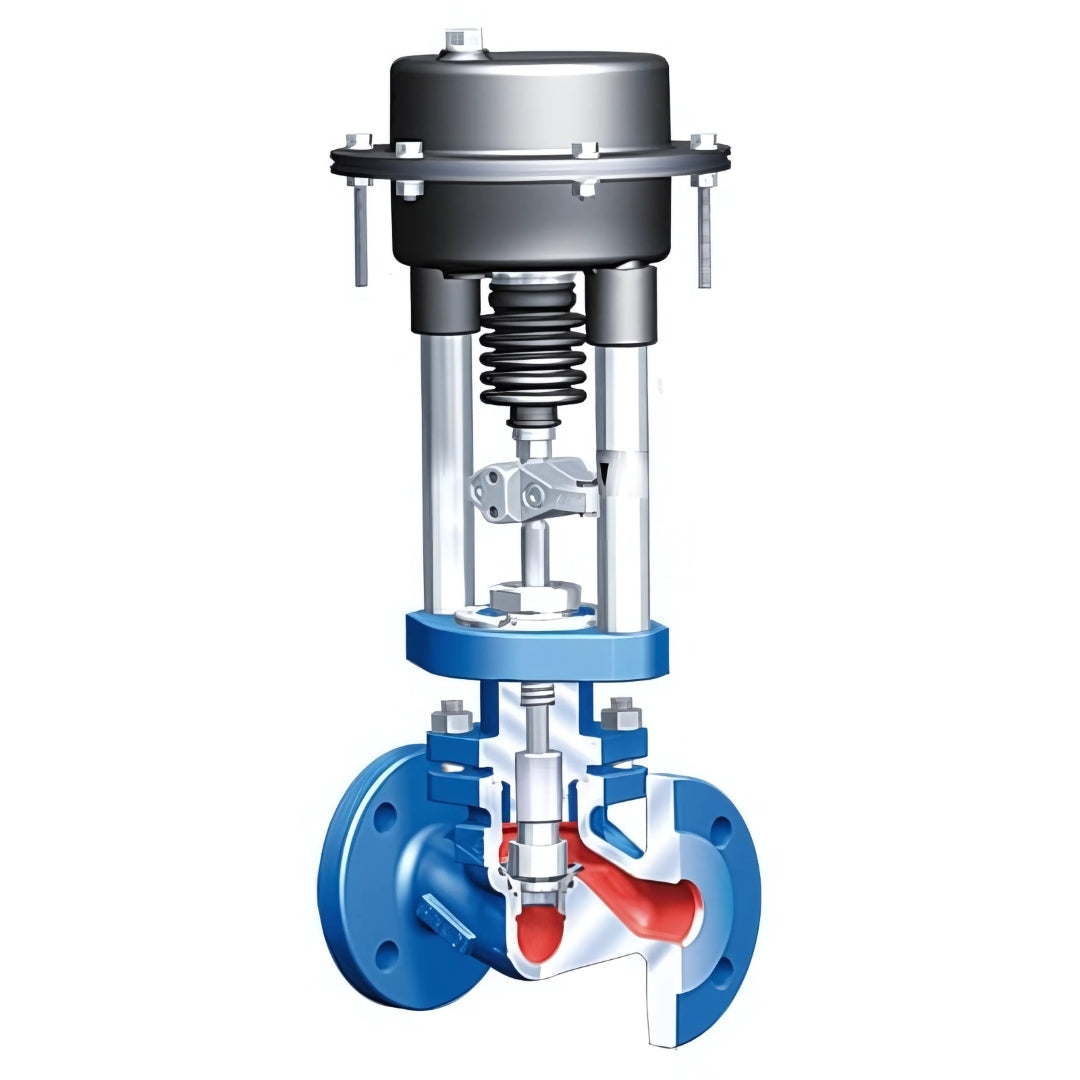Steam Valves
Ari Armaturen STEVI Vario Control Valve (Flanged PN25, Nodular Iron Body, Electric Actuator)
Ari Armaturen STEVI Vario Control Valve (Flanged PN25, Nodular Iron Body, Electric Actuator)
Couldn't load pickup availability
The Ari Armaturen STEVI Vario Control Valve with PN25 flanged connections, a nodular iron body, and a responsive electric actuator delivers precise modulation for a wide range of industrial flow applications. Engineered for efficiency and reliability, this valve ensures accurate regulation of steam, liquids, or gases — helping optimise performance across heating systems, process control loops, and general industrial networks.
The nodular cast iron body offers excellent mechanical strength, resistance to corrosion, and improved flexibility over standard grey iron, making it suitable for demanding operating conditions while remaining cost-effective. Its PN25 pressure rating supports medium-pressure systems commonly found in HVAC, district heating, and light process applications. The integrated electric actuator enables automated control with excellent positioning accuracy, supporting seamless integration into modern control systems such as PLCs or SCADA environments.
Thanks to its modular design and adaptable configuration, the STEVI Vario is a dependable choice for users looking for durability, operational precision, and reduced manual intervention in flow control processes.
Key Features
Electric Actuation
Allows for remote and automatic valve positioning with high precision and minimal delay.
Nodular Iron Body
Strong, ductile material with good pressure and thermal resistance, ideal for industrial service.
PN25 Flanged Ends
Standardised connection for easy integration into medium-pressure pipeline systems.
Modulating Control
Perfect for throttling applications requiring accurate flow, pressure, or temperature adjustment.
Compact, Service-Friendly Design
Modular layout simplifies installation, servicing, and future upgrades.
Ideal for Utility and Process Applications
Commonly used in steam distribution, heating circuits, water treatment, and plant automation.
Share

FAQ's
What is the difference between a valve and an actuator?
What types of actuators are available?
The main types of actuators are:
Pneumatic actuators – use compressed air for fast, reliable operation.
Electric actuators – use electrical power for precise control.
Hydraulic actuators – use fluid pressure for high-torque applications.
Each type offers unique advantages depending on the environment, media, and system control needs.
How do I choose the right actuator for my valve?
To select the correct actuator, consider:
Valve type and torque requirement
Power source available (air, electric, or hydraulic)
Operating environment (temperature, humidity, hazardous area)
Control signal type (on/off or modulating)
Matching actuator torque and compatibility with the valve’s ISO mounting ensures reliable performance.
What are the main types of valves used in automation?
The most common valves in automated systems include:
Ball valves – for tight shutoff and quick operation.
Butterfly valves – for larger flow control with compact design.
Globe valves – for precise throttling and flow regulation.
Check valves – to prevent backflow.
Gate valves – for full bore flow isolation.
What’s the difference between a double-acting and spring-return actuator?
Double-acting actuators use air (or power) to both open and close the valve.
Spring-return actuators use air to open (or close) the valve, and a built-in spring to automatically return it to a safe position when power or air is lost — ideal for fail-safe operation.
How often should valves and actuators be serviced?
Regular maintenance intervals depend on operating conditions, but a good rule of thumb is to inspect every 6–12 months.
This includes checking for leaks, lubrication, seal wear, and actuator responsiveness to prevent unexpected downtime.

